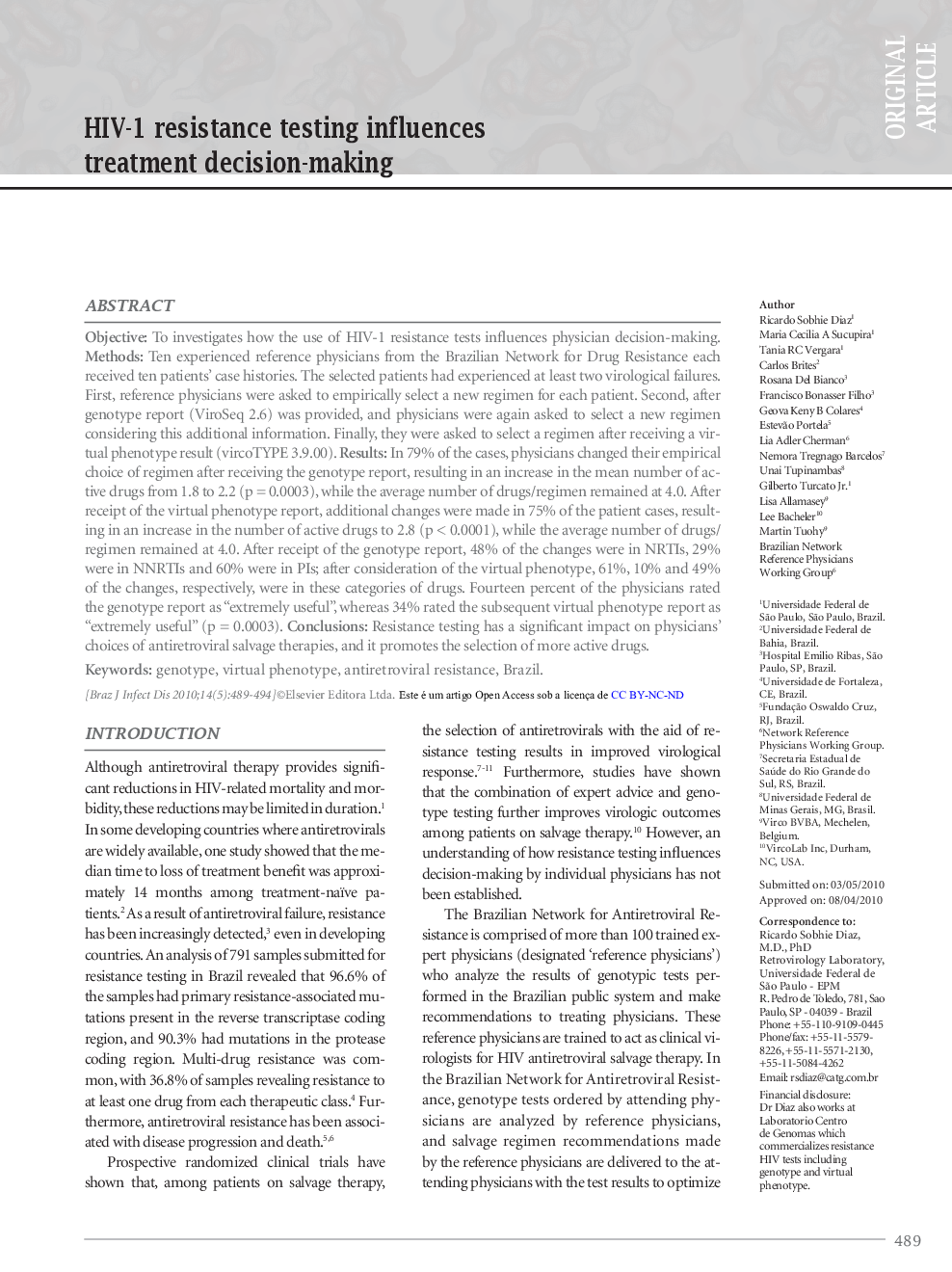| Article ID | Journal | Published Year | Pages | File Type |
|---|---|---|---|---|
| 3344637 | The Brazilian Journal of Infectious Diseases | 2010 | 6 Pages |
ObjectiveTo investigates how the use of HIV-1 resistance tests influences physician decision-making.MethodsTen experienced reference physicians from the Brazilian Network for Drug Resistance each received ten patients’ case histories. The selected patients had experienced at least two virological failures. First, reference physicians were asked to empirically select a new regimen for each patient. Second, after genotype report (ViroSeq 2.6) was provided, and physicians were again asked to select a new regimen considering this additional information. Finally, they were asked to select a regimen after receiving a virtual phenotype result (vircoTYPE 3.9.00).ResultsIn 79% of the cases, physicians changed their empirical choice of regimen after receiving the genotype report, resulting in an increase in the mean number of active drugs from 1.8 to 2.2 (p = 0.0003), while the average number of drugs/regimen remained at 4.0. After receipt of the virtual phenotype report, additional changes were made in 75% of the patient cases, resulting in an increase in the number of active drugs to 2.8 (p < 0.0001), while the average number of drugs/ regimen remained at 4.0. After receipt of the genotype report, 48% of the changes were in NRTIs, 29% were in NNRTIs and 60% were in PIs; after consideration of the virtual phenotype, 61%, 10% and 49% of the changes, respectively, were in these categories of drugs. Fourteen percent of the physicians rated the genotype report as “extremely useful”, whereas 34% rated the subsequent virtual phenotype report as “extremely useful” (p = 0.0003).ConclusionsResistance testing has a significant impact on physicians’ choices of antiretroviral salvage therapies, and it promotes the selection of more active drugs.
